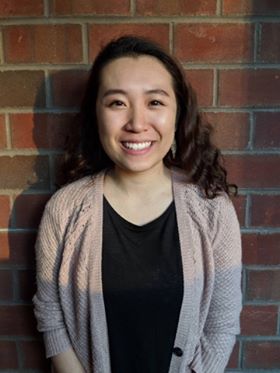Below is a summary of the abstract you submitted. Presenting author(s) is shown in bold.
If any changes need to be made, you can modify the abstract or change the authors.
You can also download a .docx version of this abstract.
If there are any problems, please email Dan at dar78@pitt.edu and he'll take care of them!
This abstract was last modified on May 1, 2018 at 9:56 a.m..

At Worcester Polytechnic, four DNA samples were sent for sequencing after being isolated: AVLE17 (isolated from Charlton, MA compost), Tsukiryu, Houdini22 and NotAPhaseMom (all three isolated from different places in Worcester, MA). Sequencing results showed that Tsukiryu is exactly identical to Cocoaberry and that the other three novel phages are extremely similar to Cocoaberry. Cocoaberry is bacteriophage WPI students isolated from a compost sample in Charlton, MA in 2015 that has not been worked on since then. The EM microscopy results showed that the circular plaques of each of our three new bacteriophage also matched that of Cocoaberry, and all four are temperate siphoviridae. NCBI BLASTn was the first tool used to align and compare each sequence to Cocoaberry. While Houdini22 and NotAPhaseMom each shows a single-nucleotide polymorphism (SNP) at the 15,316th and 24,639th base pair respectively, AVLE17 shows several SNPs concentrated throughout the first 10,000 and last 5000 bps. Phamerator also confirmed the maximum homology between these four phages which are categorized in the A4 subcluster. Additionally, each sequence has many similarities to other bacteriophages such as Kampy (isolated from Virginia in 2012) and Peaches (isolated from Louisiana in 2008), both of which also belong to the A4 subcluster.
It was interesting to note the pattern of a split DNA primase gene with a dramatic overlap in two different frames within the four phages. Therefore, one of our major project goals was to understand the function and conservation of this overlap through a comparative genomic amino acid analysis using Phamerator, Protein NCBI BLASTp, T-Coffee, and HHPred. To study the conservation of the two primase sequences throughout the A4 subcluster, all non-draft phages, plus the three draft sequences from this study were chosen. Through closer inspection, the first primase was consistently a DNA primase catalytic domain while the second primase had a zinc-binding motif. Both primase sequences are highly conserved as seen in the extreme sequence similarity within the A4 family. To study the conservation of these two domains in the entire A family, the first non-draft phages in subclusters A1-A18 were analyzed. The two-piece split primase structure was found across the A family, particularly in subclusters A1-A12 and A14-A18. T-Coffee analysis further showed that there was significant sequence conservation within the catalytic domains and less in the zinc binding domains. Spud, a C1 phage, has a one-piece DNA primase that was compared to the split primases using BLASTp and T-Coffee, resulting in higher catalytic and lower zinc-binding conservation. The results from this project suggests a starting point for determining how the split primase region has evolved and potentially how they may function on a molecular scale.

